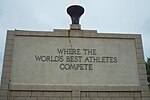Walnut, California

Walnut is a city in the eastern part of Los Angeles County in the U.S. state of California. According to the 2010 census, the city had a population of 29,172, and the population was estimated to be 29,685 in 2019.The greater Walnut Valley is located between the steep San Jose Hills to the north and the gently sloping Puente Hills to the south. Quality housing consists of master-planned single family homes ranging in size from 1,800 to 11,200 sq ft (170 to 1,040 m2). The city hosts a highly ranked public school system: the Walnut Valley Unified School District, which has been ranked by numerous sources as one of the top public school districts in Southern California, as well as Mt. San Antonio College. Walnut is one of the cities with the lowest crime rates in the San Gabriel Valley.The city covers nearly 9 sq mi (23 km2) and is home to hundreds of businesses. According to the 2010 United States Census, Walnut has a median household income at one of the top-earning percentiles in the country at $101,250.The city's name is derived from the Rancho Los Nogales Mexican land grant, nogales being the Spanish word for "walnut trees"; the native California black walnut is a common tree, native to the San Jose Hills. The City of Walnut is a general law city incorporated on January 19, 1959. It is governed by a city council/city manager form of government. A five-member city council is elected by the residents, and a mayor is elected annually by the council to serve a twelve-month term. A city manager is appointed by the council to oversee the daily activities of the city.
Excerpt from the Wikipedia article Walnut, California (License: CC BY-SA 3.0, Authors, Images).Walnut, California
Wildcat Canyon Road,
Geographical coordinates (GPS) Address Nearby Places Show on map
Geographical coordinates (GPS)
| Latitude | Longitude |
|---|---|
| N 34.033333333333 ° | E -117.86666666667 ° |
Address
Wildcat Canyon Road
Wildcat Canyon Road
91789
California, United States
Open on Google Maps




